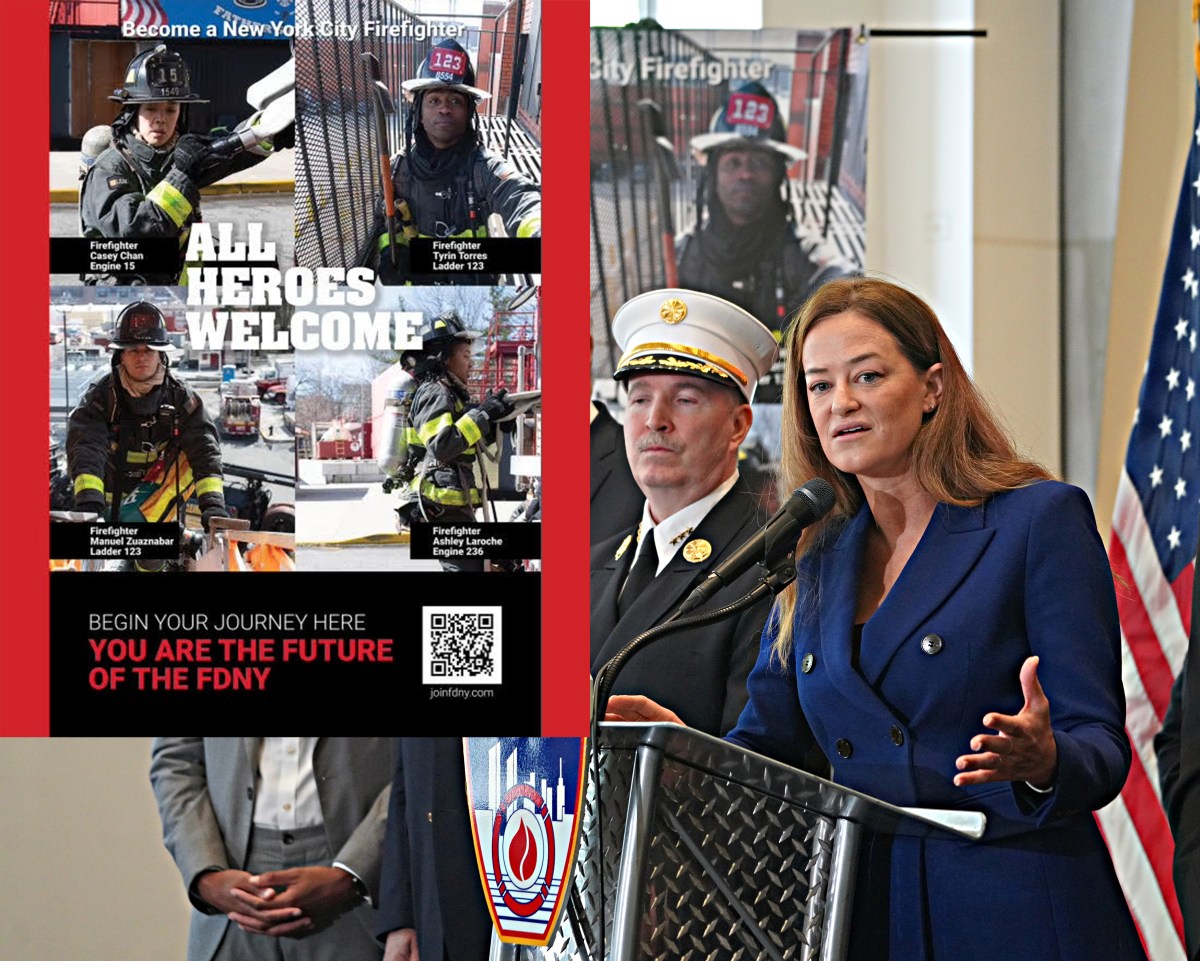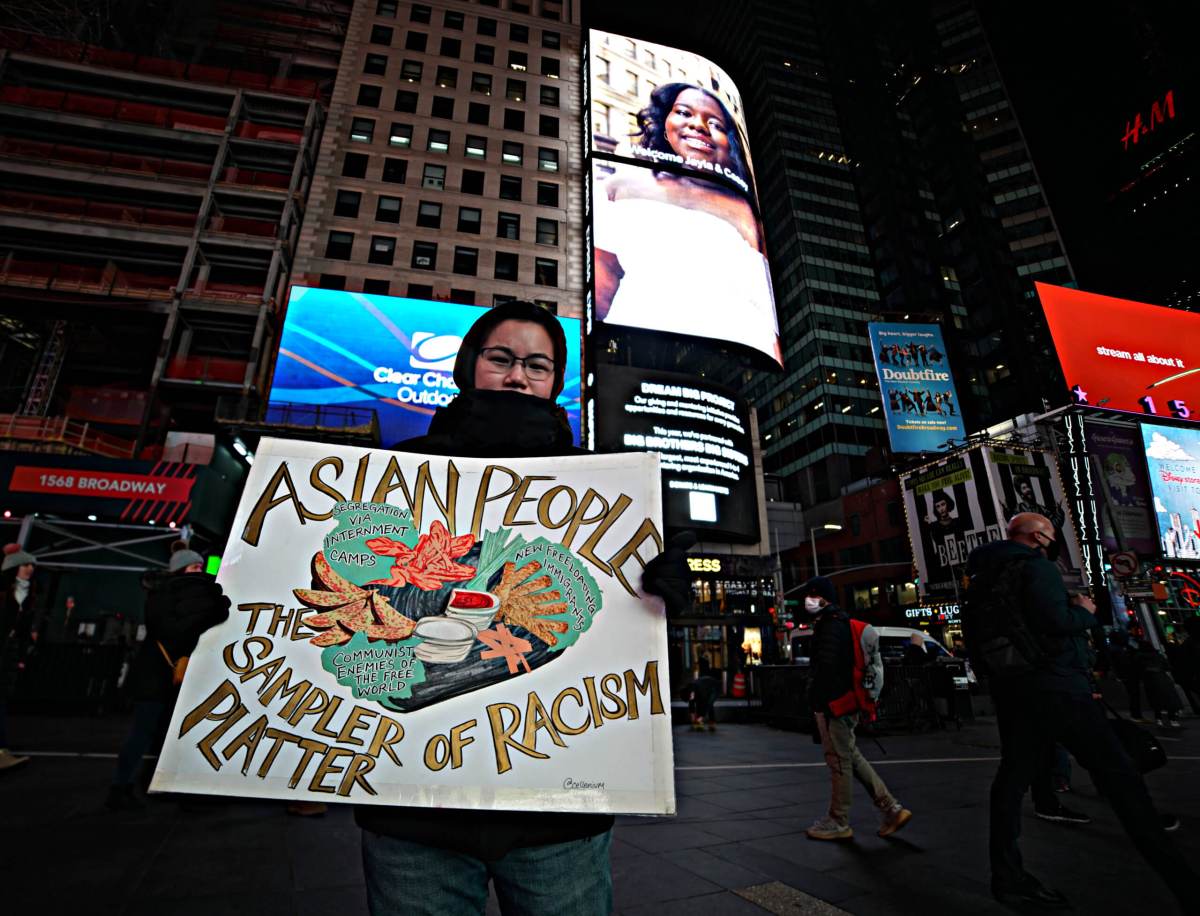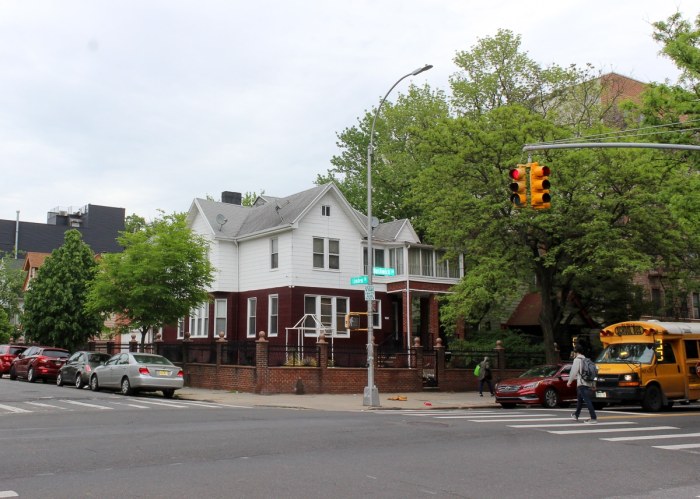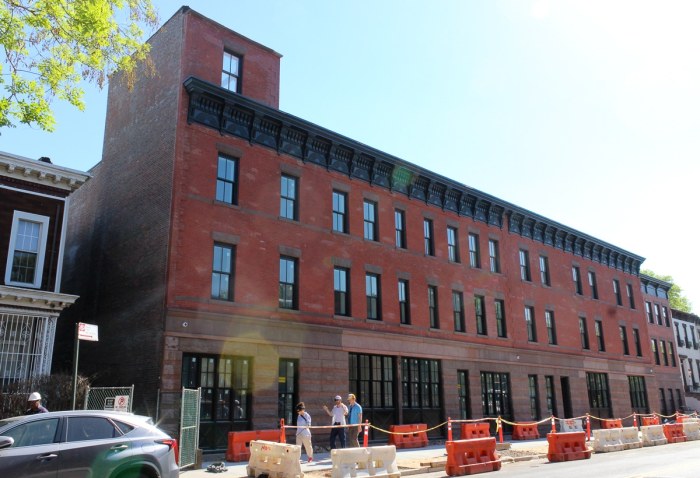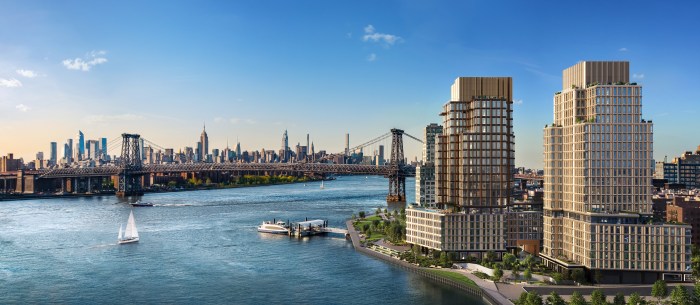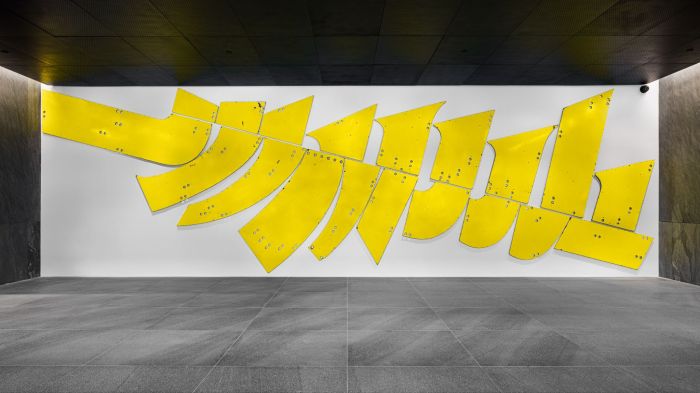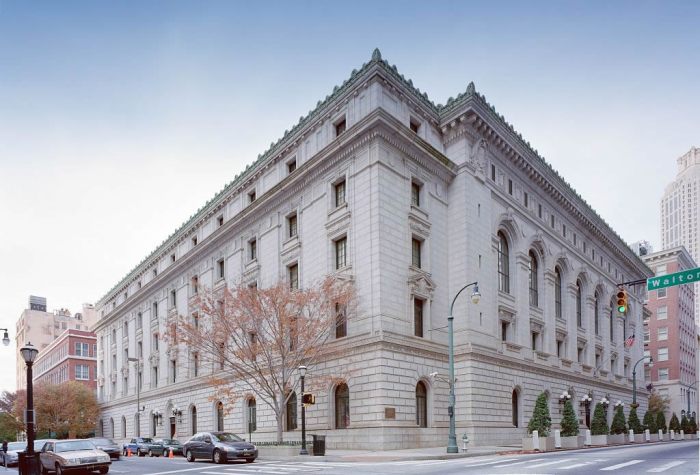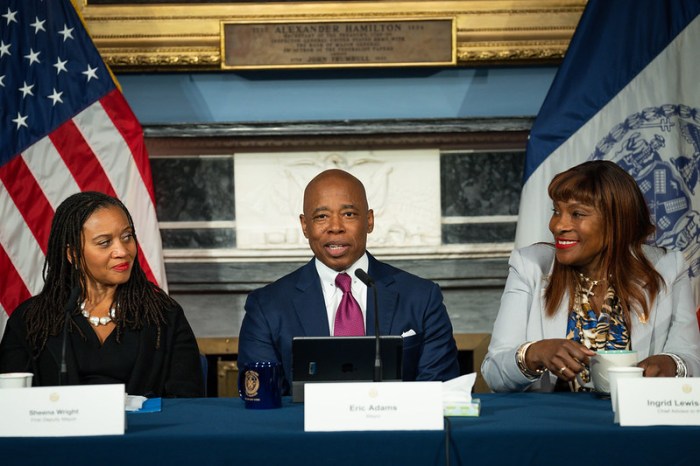A public hearing on the rezoning of Downtown Brooklyn turned into a sing-along
at Borough Hall this week as a Prospect Heights resident strapped on a
guitar and headed to the microphone to croon her displeasure about the
looming changes.
Turning to ’70s songbird Joni Mitchell, musician Carolynn Schwartz
belted out “Big Yellow Taxi” — whose chorus includes the
lyrics “They paved paradise, put up a parking lot” — while
many of the 100 other attendees clapped, and chimed in at the chorus.
“Don’t take my home,” Schwartz pleaded at the end of the
song.
Schwartz, a professional musician, is just one of several hundred people
whose homes will be condemned if developer Bruce Ratner is successful
in his bid to construct a 24-acre residential and commercial project centered
around a professional basketball arena at the intersection of Atlantic
and Flatbush avenues.
Monday’s meeting, however, was about the less publicized Downtown
Brooklyn Plan, a complex rezoning of 60 blocks to make way for office
and residential towers and turn downtown into a bustling, 24-7 hub.
That plan is currently making its way through the city’s seven-month
land use review process. Along with the plan, the city has drafted a 700-plus
page environmental impact statement.
But that was drafted before Ratner announced his $300 million deal to
purchase the New Jersey Nets and bring them to Brooklyn.
Now the city is drafting a supplemental environmental impact statement
(SEIS), the scope of which was the topic of discussion at Monday’s
meeting.
“The purpose of this SEIS is to incorporate the overall arena project,”
Hardy Adasko, chairman of the city Economic Development Corporation, said
at the meeting. “When I refer to the arena throughout this, I’m
referring to the arena plus the commercial development, plus the housing
development, plus the open space, plus the street changes.”
The arena project, if it proceeds, would have to go through its own environmental
review process although not the city’s more strenuous Uniform Land
Use Review Procedure (ULURP).
The widening of Flatbush Avenue between Atlantic Avenue and Dean Street
to make way for arena traffic concerned many of the speakers Monday night.
As part of the plan, Flatbush Avenue would be widened by 10 feet along
that two-block stretch.
The avenue widening is indicated only in tiny print on just one rendering
in the arena proposal and not mentioned in the text of the plans.
Responding to numerous e-mails and faxes that circulated before the meeting
— which labeled the street widening as the major topic of discussion
for Monday’s meeting — Adasko pointed out that it was just one
component of the arena project and not a proposal put forth by the city.
While most speakers used the meeting as an opportunity to blast the arena
proposal, a few also raised specific traffic and transportation concerns
they would like to see addressed in the environmental review.
“Why shouldn’t Brooklyn get the same as Manhattan?” asked
traffic engineer Brian Ketcham, executive director of Community Consulting
Services.
“The proposed development, the real development, is four times the
size of the World Trade Center, the same size as the Hudson Yards,”
Ketcham said, referring to the city’s plan to build a massive New
York Jets football stadium over rail yards on Manhattan’s West Side.
“Why does Manhattan get billions of dollars of new infrastructure
and Brooklyn gets a parking garage, and, maybe, a new stairway to its
subway?” Ketcham asked.
The traffic engineer is calling on the city to review the traffic and
transportation impacts of the Downtown Plan in conjunction with the numerous
other developments going on in or proposed for the area including the
arena plan.
Responding to the loss of 21,000 city jobs to New Jersey in the 1990s,
the Bloomberg administration previewed the Downtown Brooklyn Plan last
April.
The mayor pledged to fund $100 million in infrastructure improvements
and construction over the next 10 years, but the project would still be
largely dependent on market conditions and the ability to lure business
and developers.
As part of the Downtown Brooklyn Plan, the government would condemn seven
acres of private land including 130 residential units, 100 businesses
and the 57-year old Institute of Design and Construction.
Sue Wolfe, a real estate broker and president of the Boerum Hill Association,
questioned the city’s ability to woo corporate tenants to Brooklyn
and asked planners to go back to the drawing boards.
Proponents of the plan, including Darnell Canada, president of Brooklyn
United for Innovative Development (BUILD), urged the city to create jobs
for local residents.
Ratner’s plan for the Atlantic Yards, which dovetails with the Downtown
Plan to the south, is dependent on the state’s condemnation of more
than three square blocks of privately owned land, a portion of which would
be used to build the arena.
The Atlantic Yards and Downtown plans overlap at the intersection of Flatbush
and Atlantic avenues.
Written comments on the SEIS for the Downtown Brooklyn Plan will be accepted
until March 4 and can be sent to Hardy Adasko, Senior Vice President of
Planning, NYC Economic Development Corporation, 110 Williams Street, New
York, NY 10038.





